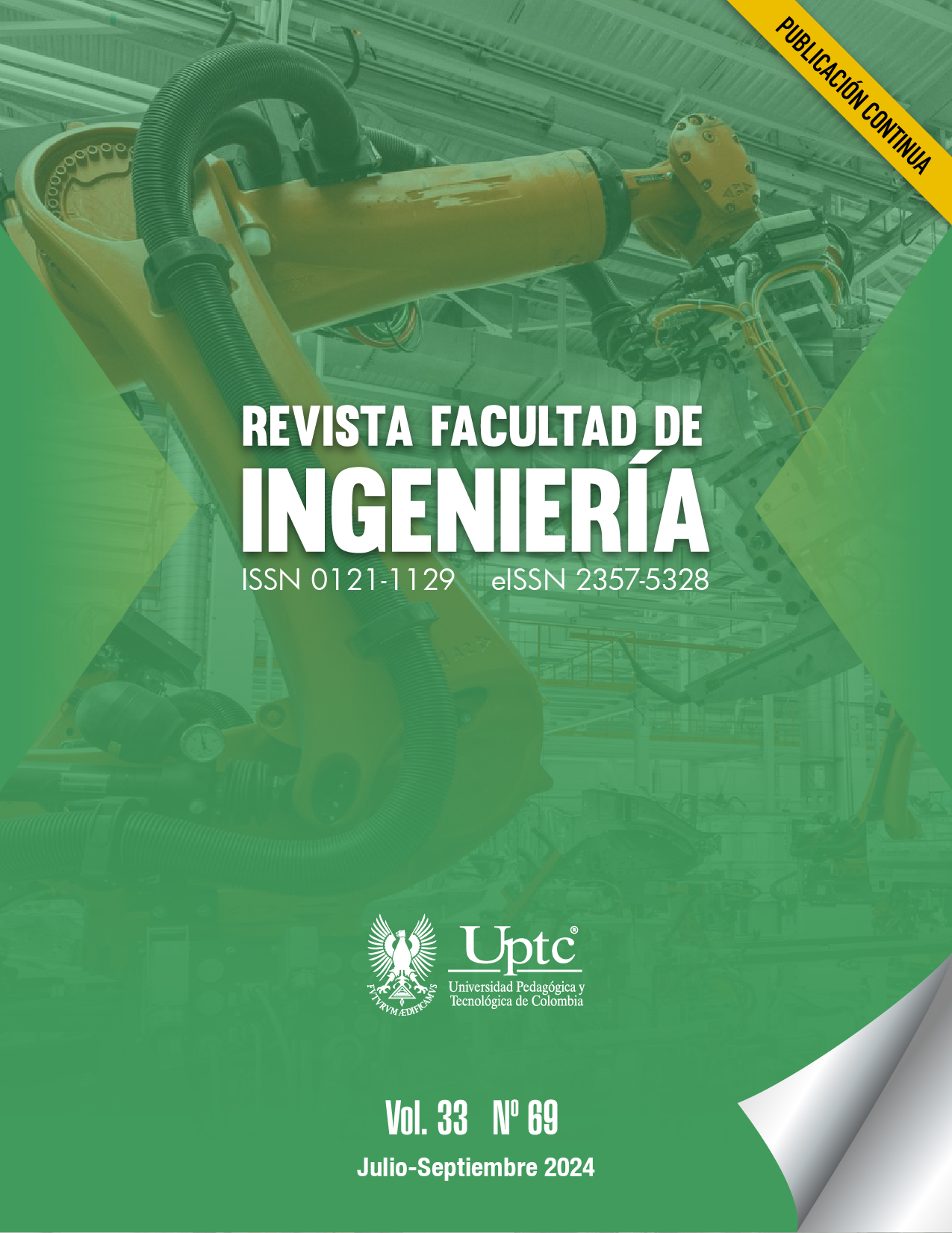Multiparametric Sensor to Measure Water Quality Parameters Using Internet of Things

Abstract
This study introduces an innovative water quality monitoring system capable of simultaneously measuring six essential parameters (total dissolved solids, oxidation-reduction potential, dissolved oxygen, temperature, pH, and electrical conductivity) by incorporating the Internet of Things technology. Therefore, it is an advanced tool for water resource management. Unlike conventional multiparameter sensors, which are often limited in their storage capacity and number of parameters, our device automatically stores data in Firebase, thus ensuring secure, accessible, and scalable real-time information management. Additionally, in situations of connectivity loss, the system includes an SD card to store data in an Excel file and ensure continuous logging without interruptions. This design not only eliminates the need for sample transportation and handling but also enables precise monitoring from any location. By measuring six distinct parameters, the system provides a comprehensive and customizable view of water quality, adapts to various needs and environments like industry, agriculture, or natural resource conservation. This versatility and technological robustness, supported by Firebase, make our system a key solution for efficient and real-time water monitoring.
Keywords
sensors, water treatment, Internet of Things
References
- T. Maguvu, C. Bezuidenhout, R. Kritzinger, K. Thsolo, M. Plaatjie, “Combining physicochemical properties and microbine data to evaluate the water quality of South African drinking water production,” Plos One, vol. 15, no. 8, pp. 1-21, 2020. https://doi.org/10.1371/journal.pone.0237335
- CONAGUA. Normas Oficiales Mexicanas-Secretaría de Medio Ambiente y Recursos Naturales, pp. 1-65, 1997.
- M. García, “Virus en aguas de consumo,” Higiene y sanidad ambiental, vol. 6, pp. 173-189, 2006.
- H. Jindal, S. Saxena, S. Kasana, “A sustainable multiparametric sensors network topology for river water quality monitoring,” Wireless Networks, vol. 24, no. 8, pp. 3241-3265, 2017. https://doi.org/10.1007/s11276-017-1532-z
- X. Wang, L. Sun, Y. Shi, “Research on a miniature water quality sensor chip and system with a temperature compensation function,” Journal of Sensors, vol. 88, pp. 1-16, 2020. https://doi.org/10.1155/2020/8897916
- AlphaOmega. Alpha Omega Electronics, 2021. https://www.alphaomega-electronics.com/es/sensores-y-sondas/2279-ap-5000-sondas-portatil-multiparametro-para-agua-dulce-salada.html
- K. Saravanan, E. Anusuya, R. Kumar, L. Son, “Real-time water quality monitoring using Internet of the Things in SCADA,” Environment Monitor Assessment, vol. 190, no. 556, 2018. https://doi.org/10.1007/s10661-018-6914-x
- I. Yaroshenko, D. Kirsanov, M. Marjanovic, P. Lieberzeit, O. Korostynska, A. Mason, I. Frau, A. Legin, “Real-time water quality monitoring with chemical sensors,” Sensors, vol. 20, pp. 1-23, 2020. https://doi.org/10.3390/s20123432
- W. Hong, N. Shamsuddin, E. Abas, R. Apong, Z. Masri, H. Suhaimi, S. Godeke, M. Aqmal, “Water quality monitoring with Arduino based sensors,” Environments, vol. 8, no. 6, pp. 1-15, 2021. https://doi.org/10.3990/environments8010006
- L. Castillo-Nieto, I. Rosas-Hernández, R. Martínez-Montejano, M. Robles-Martínez, E. Pérez, G. González-Badillo, “Instrumentation and automation of a multiparametric sensor in water quality by using LabVIEW,” Revista Internacional de Investigación en Innovación Tecnológica, vol. 10, no. 56, pp. 45-61, 2022.
- I. Fonseca-Campos, L. Reyes-Ramírez, L. Guzmán-Vargas, J. Fonseca-Ruiz, J. Mendoza-Pérez, P. Rodríguez-Espinoza, “Multiparametric system for measuring physicochemical variables associated to water quality based on the Arduino platform,” IEEE Access, vol. 10, pp. 69700-69713, 2022. https://doi.org/10.1109/ACCESS.2022.3187422
- L. Manjakkal, S. Mitra, Y. Petillot, J. Shutler, M. Scott, M. Willander, R. Dahiya, “Connected sensors, innovative sensor development, and intelligent data analysis for online water quality monitoring,” IEEE Internet of the Things, vol. 8, no. 18, pp. 13805-13824, 2021. https://doi.org/10.1109/JIOT.2021.3081772
- U. Ahmed, R. Mumtaz, H. Anwar, S. Mumtaz, A. Qamar, “Water quality monitoring: from conventional to emerging technologies,” Water Science Technology, vol. 20, pp. 28-45, 2020. https://doi.org/10.2166/ws.2019.144
- P. Damor, K. Sharma, “IoT based water monitoring system: a review,” International Journal of Advanced Research, vol. 4, pp. 1-6, 2017.
- M. Banna, S. Imran, A. Francisque, H. Najjaran, R. Sadiq, M. Rodríguez, M. Hoorfar, “Online drinking water quality monitoring: review on available and emerging technologies,” Critical Reviews in Environmental Science and Technology, vol. 44, pp. 1370-1421, 2014. https://doi.org/10.1080/10643389.2013.781936
- S. Abba, J. Namkusong, J. Lee, M. Crespo, “Design and performance evaluation of a low-cost autonomous sensor interface for a smart IoT-based irrigation monitoring and control system,” Sensors, vol. 19, e173643, 2019. https://doi.org/10.3390/s19173643
- F. Jan, N. Min-Allah, D. Dustegor, “IoT based smart water quality monitoring: recent techniques, trends and challenges for domestic applications,” Water, vol. 13, pp. 1-37, 2021. https://doi.org/10.3390/w13131729
- M. Shahanas, P. Bagavathi, “Framework for a smart water management system in the context of smart city initiative in India,” Proceedings of the Procedia Computer Science, vol. 92, pp. 583-588, 2016. https://doi.org/10.1016/j.procs.2016.07.337
- D. Pérez-Jorge, M. Martínez-Murciano, “Gammification with Scratch or AppInventor in Higher Education: A Systematic Review,” Future Internet, vol. 14, no. 12, 2022. https://doi.org/10.3390/fi14120374
- I. Sudiarthe, I. Indrayana, W. Suasnawa, S. Asri, P. Wijaya, “Data structure comparison between MySQL relational database and Firebase database NoSQL on mobile based tourist tracking application,” Journal of Physics: Conference Series, 2020. https://doi.org/10.1088/1742-6596/1569/3/032092